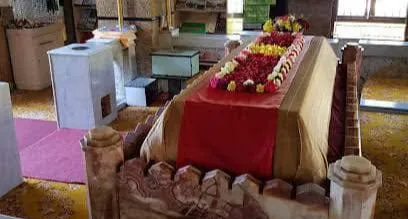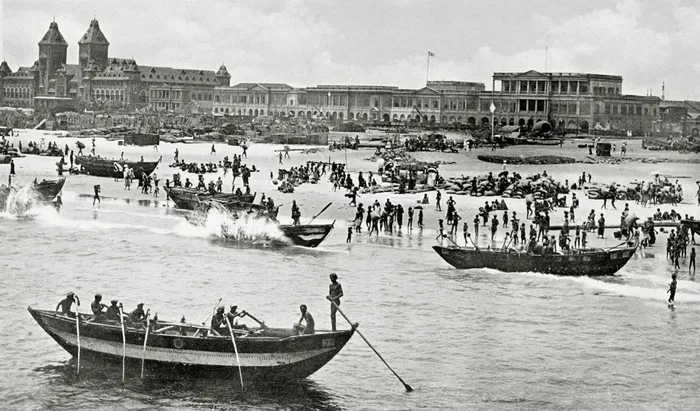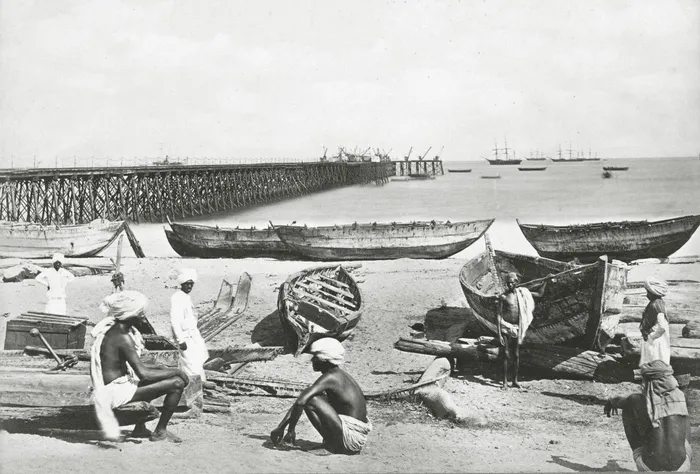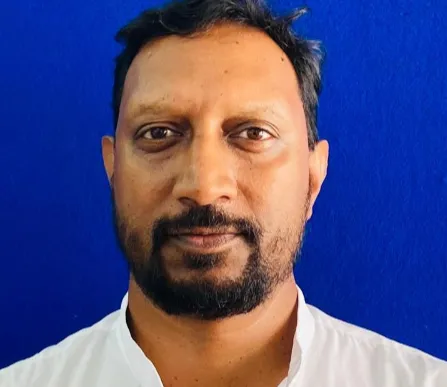The journey of the first indentured ship, the Truro
Tracing the footsteps of its passengers

The tomb of Badsha Peer.
Image: Selvan Naidoo
TODAY marks the 165th anniversary of the SS Truro's departure from the port city of Madras (now Chennai) in India, carrying 342 indentured workers on board the first ship that arrived in South Africa on November 16, 1860.
Recalling the events that transpired on the journey, together with how the passengers were received and where they were placed, allows us to get a better picture of the extraordinary journey of the first indentured workers brought to the British Colony of Natal to grow an ailing economy. Perhaps, even more fascinating would be to understand what became of the first indentured workers to arrive in Natal.
An equally compelling story would be to trace some of the descendants of these 342 passengers on the occasion of the 165th anniversary of the first Indian indentured workers arriving in South Africa. In telling this story of indenture, South Africa is perhaps the only country in the world that still houses the gravesite of one of the passengers of their first ship to land in indentured colonies spread across the world.

Madras Port in 1880. East India Company & Raj Research Group 1600 -1919.
Image: Supplied
Hazrat Badsha Peer entombed at the Mazar at the Brooks Street Cemetery, is the only existing physical link to the SS Truro, passenger number 282, Sheik Ahmed, who hailed from Chitoor, North Arcot, in the Madras Presidency.
Peer belonged to the Julaha caste and was posthumously conferred the title of a Great Saint for enthralling people with his spiritual and healing gifts. The shrine of Hazrat Sheik Ahmed Badsha Peer remains a place of pilgrimage for people of all faiths and races in Durban.
According to an article titled; A Sufi Saint's Day in South Africa: The legend of Badsha Peer by Professor Goolam Vahed:
“Though there are no contemporary sources to positively verify Bâdshâh Pîr’s historical identity, a number of works agree on the broad narrative of his life. Much of the information is legendary; in the process, as Beary remarks in another context, 'historical truths' have become 'a casualty'. Sheik Allie Vulle Ahmed (colonial number 282) has been identified as Bâdshâh Pîr. According to records of the Indian Immigration Department, Sheik Ahmed was thirty when he came to Natal…Although it is claimed that he came alone and lived most of his life as a recluse on the streets of Durban, the name following his name on the ship list is that of a lady Ameenah Bee (283), also from Arni in North Arcot, and belonging to the same caste, julâhâ’. Both were assigned to RG Mack, and both transferred to F Salmon in December 1861.”

Madras Port in 1860. East India Company & Raj Research Group 1600 -1919.
Image: Supplied
Other passengers who arrived with Badsha Peer are revealed in an extraordinary archive of personal heritage, brought to life by a letter sent to us by Seshan Naidoo, whose lineage is traced to passengers 19, 20, and 21, on board the Truro.
Naidoo’s maternal great-great-grandparents, Chengabiayan Rungiah, Venkamah, and Vencalaramah, were indentured to Mr Lamport of Merebank, working in his sugar cane fields. When they were discharged from their contracts, they were allowed 40 acres of land in the South Coast of Natal. Chengabiayan refused the offer of land, opting instead to work as a sirdar (supervisor) for a Mr Duesled in Isipingo.
In tracing further passengers, I would have never imagined that my own heritage would be traced to the Truro. My maternal grandmother, Amurtham Varden, was born in Isipingo on January 14, 1916. On the birth certificate of Amurtham’s, her father is listed as Varden, indentured no 3299, and her mother is named Polammah, with her lineage traced to indentured ship numbers 21247/903/314.
In the case of my great-grandfather, Varden, the single number 3299 meant that he was born in India. In my great-grandmother’s case, Polammah’s, her three numbers, 21247/903/314, meant that she was colonial-born. Polammah’s father, number 21247, had come from India with her mother’s mother listed as number 314 of the Truro, Chillee Nursoo.
Although the original manifest of the Truro is strangely missing from the Archives repository, it has been thankfully digitised by Professor Joy Brain through the ship records available online. The book, Documents of Indentured Labour - Natal 1851-1917 by YS Meer details the movement of most of the passengers of the Truro.
Davaram, his wife Naguim, and Elizabeth, members of the first family recorded on the ship, were recorded to have left, together with a good many other passengers, for the Diamond fields of Kimberly on February 18, 1896.
Others listed on the Truro were recorded to have returned to India on the Red Riding Hood in 1871, when they completed ten years as part of the residential requirements of their indentured contract in Natal. Many passengers, number 25, 26, 30, 34, 79, 91, and many others died in the colony before 1890. Others returned to India on ships like the Ganges in 1875 and the Umvoti in 1876. When the first passengers arrived, a description of the events that unfolded in Durban is provided by L. M Thompson’s seminal study, Indian Immigration into Natal 1860 -1872, noting that:
“The Truro arrived on the evening of Friday, 16th November(1860), taking everyone unawares, although it had been officially “daily expected” since the 12th (November). The barracks were unfinished, and Tatham (Edmund, the 2nd “Coolie Immigration Officer”) was upcountry. But Philip Allen, the Colonial Treasurer, took charge: he hurried on the building of the barracks; landed the Indians after the Health Officer, Dr Holland, had given them a clean bill of health; arranged for their supervision by a specially enrolled police force; and implored the Colonial Secretary to despatch the Agent without delay. Edmund Tatham received his appointment in Pietermaritzburg on the 18th (November) and promptly rode back through the night to Durban, to find the Indians lodged in the still incomplete barracks, which were surrounded by pools of stagnant water.”
While waiting to be assigned to employers, some passengers, particularly those who arrived as families, stayed at the depot barracks for as long as 3 to 6 months waiting for their employer to arrive to take them to their plantations. Once assigned, passengers began the long walk, up to 36km to their plantations, balancing their meagre belongings on their heads on their journey towards Clare Estate, Cato Estate, Sea Cow Lake, Springfield, Umgeni, Claremont, Isipingo, and further afield to Chakaskraal, Umhlali, Umkomaas, and Umzinto.
The first task that awaited the workers on the plantations was that of building their huts from natural materials of grass, wattle, and daub. In an editorial column in the Natal Mercury written by George Robinson, its first editor, Robinson wrote:
"Sugar is probably destined to constitute the first basis of our advancement and prosperity".
George Robinson’s son and successor, Sir John Robinson, opined: “At last, after discussions of years and extinction of hopes innumerable, the planters' pet project (indentured labour) has been realised. Later, recalling the arrival of the first indentured Indians, Sir John wrote: “I well remember one evening late in 1860 watching from a height overlooking the sea, the ship Truro sail up to her anchorage. Her white canvas towered over the blue sea line; we all regarded her as the harbinger of a new dispensation. And so, she proved to be, though in a sense far wider than we expected.”

Selvan Naidoo
Image: File
Selvan Naidoo is the great-grandson of Camachee 3297 and Director of the 1860 Heritage Centre
* In commemorating the journey of the Truro, the 1860 Heritage Centre, in partnership with the Natal Tamil Vedic Society Trust, will host a Thevaram concert on October 12 at 2pm at the Tamil Federation Cultural Center (NTVS Hall), 42 Silverglen Drive, Chatsworth. Call Selvan Naidoo on 082 498 2614 for more details.
Related Topics: